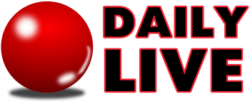The Swiss Army Knife, synonymous with versatility and practicality, is indeed used by the Swiss Army. This fact counters the common assumption that its name is merely a clever marketing strategy. The knife’s journey from a basic military tool to a global icon is as intriguing as its multifunctionality.
In 1889, the Swiss Army sought a multipurpose tool to complement the newly adopted 1889 Schmidt-Rubin rifle and to aid soldiers in opening tinned food. This led to the standardization of the Model 1890 Soldier’s Knife, equipped with a knife, reamer, screwdriver, and can opener. Initially lacking the famous red plastic grips, it featured dark oak panels.
Karl Elsener, a Swiss surgical equipment manufacturer, played a crucial role in the evolution of the Swiss Army Knife. His 1897 patented design for officers, featuring additional tools like an ink eraser and corkscrew, saved his company from bankruptcy. Although not officially adopted by the army, it gained popularity among officers as a private purchase.
Initially, the Swiss Army’s demand was met by the German firm Webster & Company. However, by 1908, Elsener (later Victorinox) and another Swiss firm, Wenger, took over the production, marking the beginning of purely Swiss manufacturing of these knives.
Throughout the years, Victorinox and Wenger have innovated various models with an expanding array of tools, catering to both military and civilian needs. The Swiss Army Knife’s versatility has made it a staple in various fields, from outdoor activities to space missions with NASA.
The Swiss Army has continuously updated its standard-issue knives, with the most recent being the Model 2008. This model features an ergonomically designed polymer frame and tools like a serrated blade and Phillips screwdriver, demonstrating ongoing innovation in design and utility.
Victorinox and Wenger have not only supplied the Swiss Armed Forces but also other nations’ militaries. The majority of Swiss Army Knives, however, find their home in the civilian market. Their iconic design and practicality have earned them a place in cultural history, from museums to popular media.
Here is the complete table showcasing all the tools commonly found in Swiss Army Knives:
| Swiss Army Knife Tools | |
|---|---|
| 1 | 5-inch 60% serrated locking blade |
| 2 | Nail file |
| 3 | Nail cleaner |
| 4 | Corkscrew |
| 5 | Adjustable pliers with wire crimper and cutter |
| 6 | Removable screwdriver bit adapter |
| 7 | 5-inch regular blade |
| 8 | Locking needle-nose pliers with wire cutter |
| 9 | Removable screwdriver bit holder |
| 10 | Magnetized recessed bit holder |
| 11 | Double-cut wood saw with ruler |
| 12 | Chain rivet setter |
| 13 | Removable 5mm Allen wrench |
| 14 | Screwdriver for slotted and Phillips head screws |
| 15 | Removable tool for adjusting spokes |
| 16 | 10mm Hexagonal key for nuts |
| 17 | Removable 4mm curved Allen wrench with Phillips head screwdriver |
| 18 | Locking screwdriver |
| 19 | Universal wrench |
| 20 | 4-inch springless scissors |
| 21 | 65-inch clip-point utility blade |
| 22 | Phillips head screwdriver |
| 23 | 5-inch clip-point blade |
| 24 | Club face cleaner |
| 25 | 4-inch round tip blade |
| 26 | Patented locking screwdriver |
| 27 | Cap lifter |
| 28 | Can opener |
| 29 | Shoe spike wrench |
| 30 | Divot repair tool |
| 31 | 4mm Allen wrench |
| 32 | 5-inch blade |
| 33 | Fine metal file with precision screwdriver |
| 34 | Double-cut wood saw with ruler |
| 35 | Cupped cigar cutter with double honed edges |
| 36 | 12/20-gauge choke tube tool |
| 37 | Watch the case back opening tool |
| 38 | Snap shackle |
| 39 | Mineral crystal magnifier |
| 40 | Compass |
| 41 | Straight edge, ruler (in./cm) |
| 42 | Telescopic pointer |
| 43 | Fish scaler |
| 44 | Hook dis-gorger |
| 45 | Line guide |
| 46 | Shortix laboratory key |
| 47 | Micro tool holder |
| 48 | Micro tool adapter |
| 49 | Straight micro scraper |
| 50 | Curved micro scraper |
| 51 | Laser pointer |
| 52 | Metal file |
| 53 | Metal saw |
| 54 | Flashlight |
| 55 | Micro tool holder |
| 56 | 5mm Phillips head screwdriver |
| 57 | 2mm Phillips head screwdriver |
| 58 | 8mm Phillips head screwdriver |
| 59 | Fine fork for watch spring bars |
| 60 | Reamer |
| 61 | 3mm pin punch |
| 62 | 8mm pin punch |
| 63 | Round needle file |
| 64 | Removable tool holder |
| 65 | Self-centering screwdriver for gunsights |
| 66 | Flat Phillips head screwdriver |
| 67 | Chisel-point reamer |
| 68 | Mineral crystal magnifier |
| 69 | Small ruler |
| 70 | Extension tool |
| 71 | Locking flat nose needle-nose pliers |
| 72 | Removable screwdriver bit holder |
| 73 | Magnetized recessed bit holder |
| 74 | Tire tread gauge |
| 75 | Fiber optic tool holder |
| 76 | Can opener |
| 77 | Patented locking screwdriver |
| 78 | Cap lifter |
| 79 | Wire stripper |
| 80 | Reamer |
| 81 | Awl |
| 82 | Toothpick |
| 83 | Tweezers |
Safety Concerns with Swiss Army Knives
Swiss Army Knives, while known for their versatility, pose certain safety risks. The primary danger comes from improper handling or use of the knife blades and other sharp tools. Accidental cuts or injuries can occur if the knife is not handled with care, especially when opening or closing the blades. The multifunctional nature of these knives, with tools like serrated blades and saws, increases the risk of injury if used without proper knowledge or training.
Risk Mitigation and Responsible Use
To mitigate these risks, it is essential to educate users, especially beginners, on the correct handling of Swiss Army Knives. This includes understanding how to safely open, use, and close each tool, and recognizing the appropriate tool for a given task. Regular maintenance, such as keeping the blades sharp and the tools clean, also plays a crucial role in ensuring safety. Dull blades can lead to accidents as they require more force to cut, increasing the likelihood of slippage.
Legal Regulations for Swiss Army Knives in Switzerland
In Switzerland, the laws surrounding the carrying and use of Swiss Army Knives are relatively lenient, reflecting the country’s cultural connection to these tools. There are no specific legal restrictions on carrying Swiss Army Knives, given their status as utility tools rather than weapons. However, the general Swiss law on weapons applies, which prohibits carrying knives with the intent to harm.
Contextual Restrictions and Public Perception
While Swiss Army Knives are legally accepted as tools, certain contexts may impose restrictions. For instance, carrying any knife, including a Swiss Army Knife, in places like airports, certain public buildings, or schools may be subject to specific regulations or bans. Public perception also plays a role; displaying or using a knife inappropriately in public spaces can cause alarm or be misconstrued as threatening, leading to legal consequences.
What You Need To Know About Swiss Knives
- Swiss Army Knives have been adapted for various professions. For instance, there are models tailored for electricians, featuring insulated screwdrivers, or for tech professionals, including tools like wire strippers and fiber optic cable cutters.
- Victorinox, one of the primary manufacturers, has taken steps towards sustainability. This includes using recycled steel and implementing energy-efficient production methods, highlighting their commitment to environmental responsibility.
- NASA astronauts have used specially designed Swiss Army Knives. These custom versions are made to suit the unique requirements of space missions, including tools that can be operated with gloves and corrosion-resistant materials.
- There are collector’s editions of Swiss Army Knives that have become highly sought after. These editions often feature unique designs, limited production numbers, and sometimes even precious metals and stones.
- In Switzerland, owning a Swiss Army Knife is almost a rite of passage. It’s common for young Swiss people to receive their first knife during adolescence, symbolizing a step towards responsibility and adulthood.
- Swiss Army Knives are standard in many military and civilian emergency kits worldwide. Their versatility makes them an essential tool for survival situations.
- The Wenger Giant, a Swiss Army Knife model, holds the Guinness World Record for the most multifunctional penknife. It features 141 different tools and weighs about 3 pounds.
- Recent advancements allow for high levels of personalization. Customers can now choose not just the color and material of the handles but can also have their knives engraved or printed with personal images or text.
- Specific models of Swiss Army Knives are equipped with tools for emergency responders, including glass breakers and seatbelt cutters, showcasing their importance in rescue operations.
- The Swiss Army Knife has been represented in various forms of media and art, symbolizing Swiss precision and innovation. It has been featured in museum exhibitions around the world as an example of outstanding design and functionality.
The Swiss Army Knife is more than just a clever name; it is a tool deeply ingrained in the history and functionality of the Swiss Army. Its evolution from a simple military tool to a global icon underscores its utility and enduring appeal.

